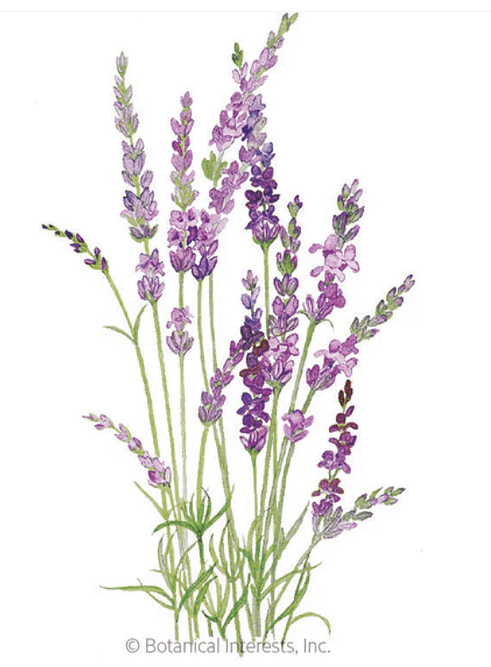This post may contain affiliate links. As an Amazon Associate we earn from qualifying purchases.
How and when to prune lavender is important to know for the health of the plant. It won’t live nearly as long as it should if not pruned properly and at the right time.
Lavender is one of those delightful plants that bring beauty, fragrance, and a touch of Mediterranean magic to our gardens. But to keep your lavender looking lush and healthy, it’s crucial to know how and when to prune it.
Since different types of lavender have their own quirks, let’s break it down by variety: English, French, Spanish, Lavandin, and Portuguese.

First, if you don’t know what type of lavender you’re growing, you’ll need to figure it out. We offer photos below.
What happens if you don’t prune lavender?
“Regular pruning is essential if you want your lavender to look good, stay healthy and live longer. Properly pruned, some varieties of lavender can last up to 20 years.
Left untouched, it soon becomes shapeless and woody, with few flowers and long, bare stems. Here’s how to prune your lavender to maintain an attractive, sweet smelling shrub that will brighten your garden for many years to come.”

English Lavender (Lavandula angustifolia)
When to Prune: Late summer or early fall, right after blooming.
How to Prune: English lavender is a hardy variety. After the flowers fade, cut back the stems by about one-third. Make sure you don’t cut into the woody part of the plant, as it might not regrow from there. Pruning helps keep the plant tidy and encourages more blooms next year.
French Lavender (Lavandula dentata)
When to Prune: Early spring and again in mid-summer.
How to Prune: French lavender is less cold-hardy but blooms for longer periods. In early spring, remove any winter damage and shape the plant lightly. After the first flush of blooms in mid-summer, give it a harder prune, cutting back by about one-third but avoiding the woody stems. This helps maintain its shape and promotes more flowering.

Spanish Lavender (Lavandula stoechas)
When to Prune: Early spring and after each flowering cycle.
How to Prune: Spanish lavender is known for its distinctive pineapple-shaped blooms. Prune lightly in early spring to remove any frost damage and shape the plant. After each flowering cycle, cut back the spent flower stems to encourage more blooms. You can trim it a bit harder in late summer, but again, avoid cutting into the woody parts.

Lavandin (Lavandula x intermedia)
When to Prune: Late summer, after blooming.
How to Prune: Lavandin, a hybrid, is robust and often larger than English lavender. After it finishes blooming in late summer, prune it back by about one-third. This helps maintain its shape and prevents the plant from becoming too leggy. Be gentle around the woody stems, as they don’t regenerate well.

Portuguese Lavender (Lavandula latifolia)
When to Prune: Early spring and after each flowering cycle.
How to Prune: Portuguese lavender, also known as spike lavender, benefits from a light prune in early spring to remove any winter damage. After each flowering cycle, trim back the spent flowers to encourage more blooms. A harder prune can be done in late summer, reducing the plant by up to one-third, but again, be cautious of the woody parts.
General Pruning Tips
Tools: Use clean, disinfected and sharp pruning shears to make clean cuts.
Clean Up: Remove all cuttings from around the plant to prevent disease and pests.
Shape: Aim for a tidy, rounded shape to keep the plant compact and prevent it from getting too leggy.
Pruning lavender may seem like a chore, but it’s really worth the effort. Proper pruning ensures your lavender stays healthy, looks great, and produces plenty of fragrant blooms year after year. So grab those shears and get to it—your lavender will thank you!
Notes
English lavender: By Swallowtail Garden Seeds via flickr. CC by 2.0
French lavender: Lavendula dentata by KENPEI, CC BY-SA 3.0, via Wikimedia Commons
Spanish lavender: Lavandula-stoechas-schopflavendel by Holger Krisp, CC BY 3.0, via Wikimedia Commons
Portuguese lavender: Lavandula latifolia. Locatie, De Kruidhof Buitenpost by Dominicus Johannes Bergsma, CC BY-SA 4.0, via Wikimedia Commons
Lavandin: Lavendula x intermedia Seal 0zz by David J. Stang, CC BY-SA 4.0 <>, via Wikimedia Commons




